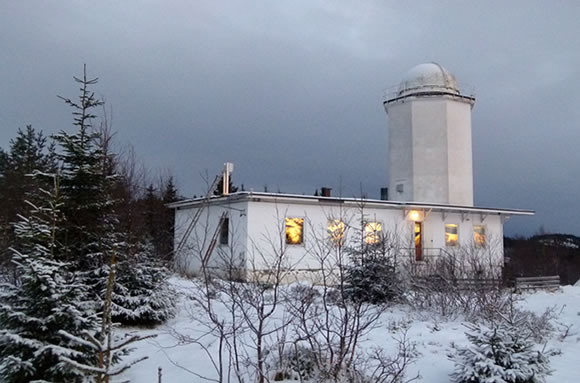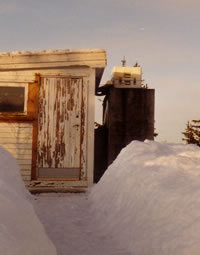|
~ Stations:
|
Harestua, Norway, 60.22°N, 10.75°E Introduction The “Solobservatoriet of Harestua” is a small but well-known solar observatory near Harestua, located about 40 km nortwards Oslo, Norway. Subordinated by the University of Oslo, it was used for solar research purposes from 1954 to 1986 but now, it is mainly dedicated for public courses. Harestua is part of the NDACC network as a complementary station. BIRA-IASB operates there fully automated zenith-sky DOAS instruments since 1998. The station is also equipped with a high-resolution FTIR spectrometer operated by the Department of Radio and Space Science, Chalmers University of Technology, Gothenburg. Instruments and operation BIRA-IASB ground-based activities at the complementary NDACC station of Harestua (Southern Norway, 60°N) started in January 1994 with the first phase of the SESAME campaign (January-April 1994). From Augustus 1995 to December 1995, BIRA-IASB contributed to the validation of the GOME instrument on board on ERS-2 launched in June of this year.
The new instruments are built on the same design but the box with the spectrometers and the CCD detectors is now inside the building. Measurements are operated using optic fibers.  The building with the new instrument (2012- ) Data NO2 and O3 vertical columns are averaged for each twilight, sunrise and sunset in the range of solar zenith angles of 87°-91°. BrO and OClO differential slant columns are averaged in the range of solar zenith angles of 88°-92° for BrO and 89°-93° for OClO. BIRA-IASB provides the CALVAL (http://nadir.nilu.no/calval/index.php) and the GEOMON (http://www.geomon.eu/) data bases with these data in HDF format. The O3 times series and the NO2 times series cleaned from tropospheric signatures are also available on the NDACC data base in NASA-AMES format. List of publications Hendrick, F., Van Roozendael, M., Chipperfield, M. P., Dorf, M., Goutail, F., Yang, X., Fayt, C., Hermans, C., Pfeilsticker, K., Pommereau, J.-P., Pyle, J. A., Theys, N., and De Mazi\egrave;re, M.: Retrieval of stratospheric and tropospheric BrO profiles and columns using ground-based zenith-sky DOAS observations at Harestua, 60° N, Atmos. Chem. Phys., 7, 4869-4885, doi:10.5194/acp-7-4869-2007, 2007. [link] Hendrick, F., Pommereau, J.-P., Goutail, F., Evans, R. D., Ionov, D., Pazmino, A., Kyrö, E., Held, G., Eriksen, P., Dorokhov, V., Gil, M., and Van Roozendael, M.: NDACC/SAOZ UV-visible total ozone measurements: improved retrieval and comparison with correlative ground-based and satellite observations, Atmos. Chem. Phys., 11, 5975-5995, doi:10.5194/acp-11-5975-2011, 2011. [link] |




